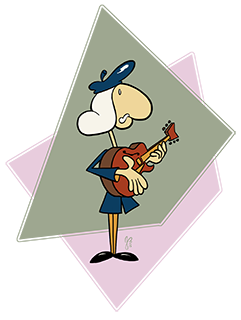Here is a great scale warm up -- Best Warm Up Exercise When Time is Limited.
R, 2, 3, #4, 5, #4, 3, 2, R (Lydian)
R, 2, 3, 4, 5, 4, 3, 2, R (Ionian, Major)
R, 2, b3, 4, 5, 4, b3, 2, R (Minor)
R, b9, b3, 4, 5, 4, b3, b9, R (Phrygian Minor)
R, b9, b3, 4 b5, 4, b3, b9, 7 (Locrian, Half-Diminished -- down to next root one semi-tone down)
Start again with the last note as the new root.

 RSS Feed
RSS Feed
